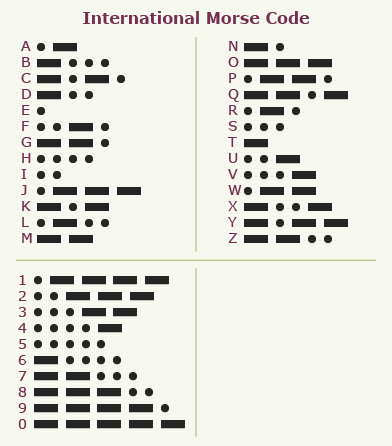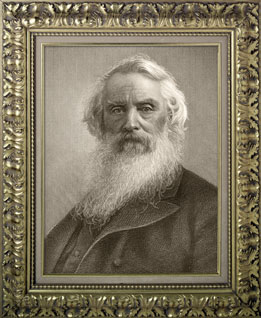Lesson 3
1. Lesson 3
Module 3: Permutations, Combinations, and the Fundamental Counting Principle
Lesson 3: Problems Involving Permutations
Focus
Morse code is a method of transmitting messages using a series of clicks and pauses, short and long sounds, or flashes of light. The order and duration of the dots (called dits) and dashes (called dahs) are used to decipher the message.

Use Morse code to decipher the following; then check your answers.
![]()
![]()
![]()
![]()

frame: Brand X Pictures/Thinkstock,
Samuel Morse portrait, Photos.com/Thinkstock
Morse code was invented by Samuel F. B. Morse. He invented the first working telegraph in 1836 and sent the first Morse code message, which read, “What hath God wrought?” He sent the message from Washington to Baltimore. The standard international distress signal SOS was developed and is represented by the following:
![]()
Morse code is still a highly effective way to communicate in times when more current communication methods are compromised.
The order of the dots, dashes, and spaces determine what word or letter of the alphabet is being represented. If the order of letters in a Morse code transmission is out of order, the message will be misunderstood or incorrect.
As you continue to work with permutations, you will need to remember that the order of the objects that are selected will play an important role in whether or not the solution is correct. Always ask yourself, “How does the order of the objects affect my answer?”
Lesson Outcome
At the end of this lesson, you will be able to determine the number of permutations of objects when not all objects are being arranged, some objects are identical, and there are conditions on the permutations.
Lesson Question
In this lesson you will investigate the following question: How can you determine the number of permutations when not all objects need to be arranged or when some of the objects are identical?
Assessment
Your assessment may be based on a combination of the following tasks:
- completion of the Lesson 3 Assignment (Download the Lesson 3 Assignment and save it in your course folder now.)
- course folder submissions from Try This and Share activities
- additions to Formula Sheet
- work under Project Connection